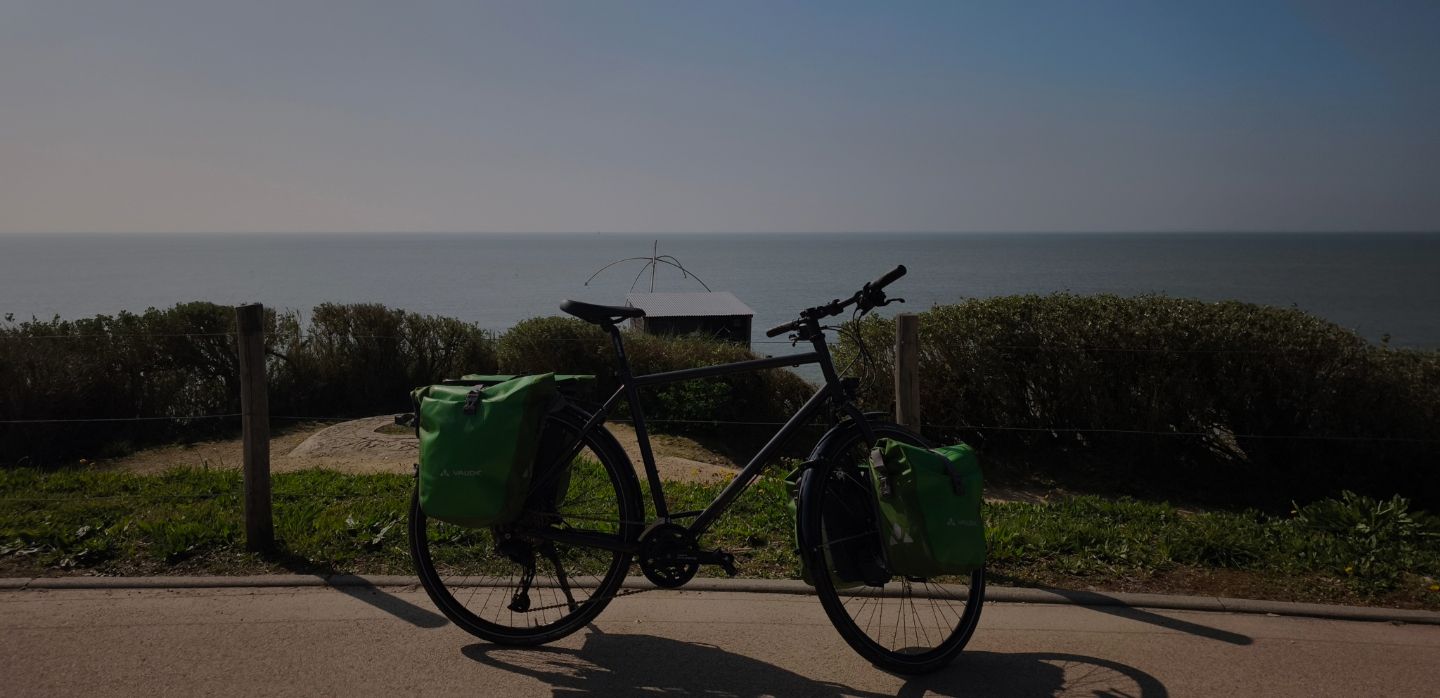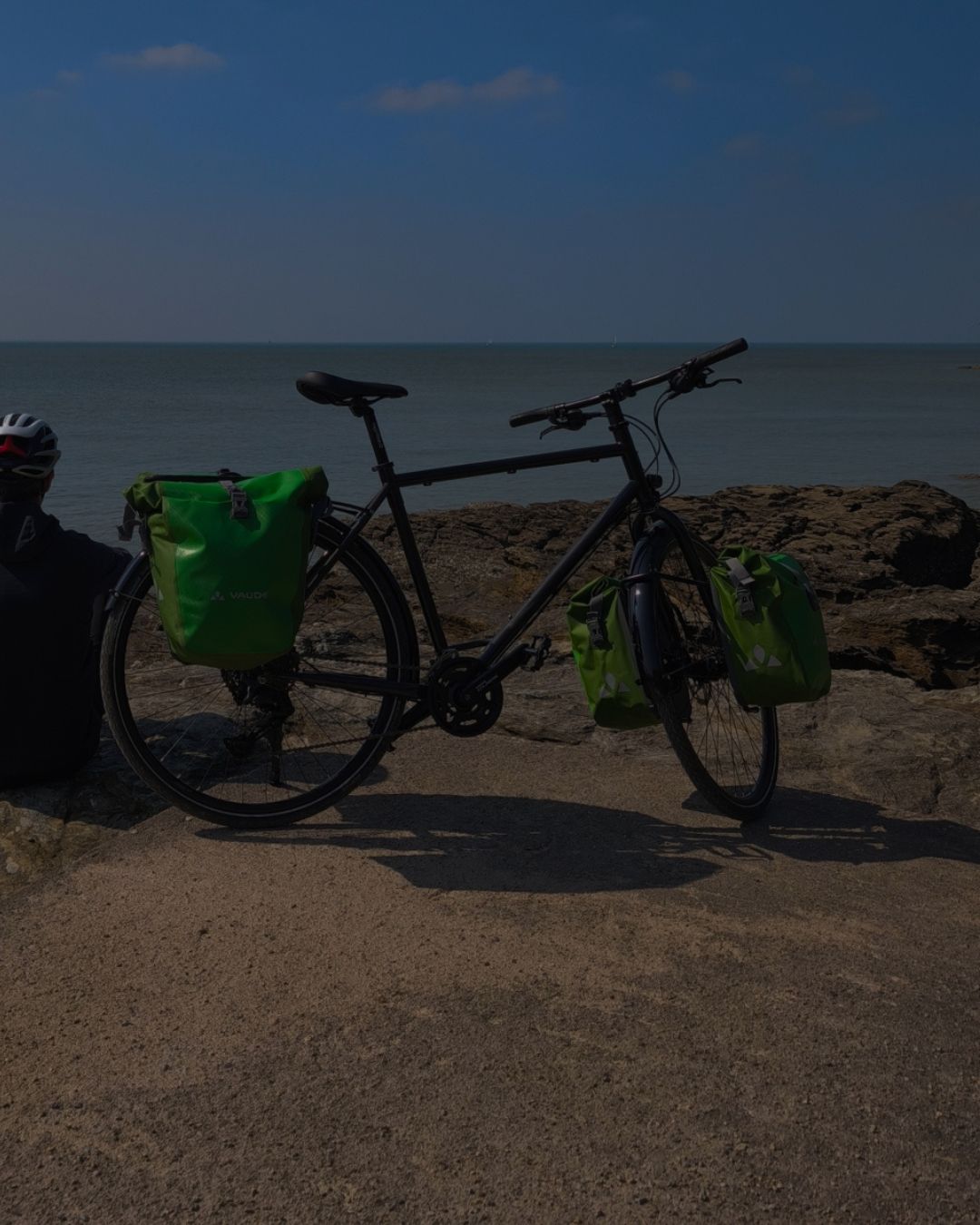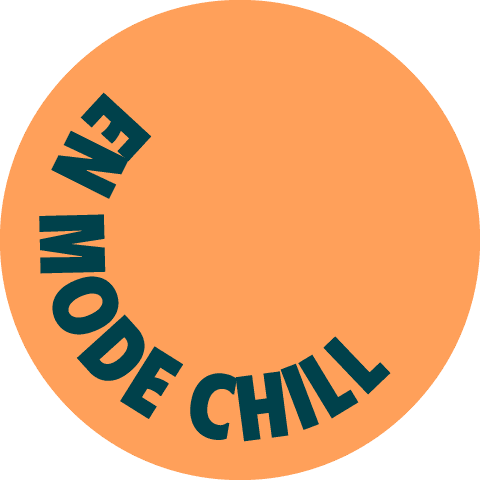

Nos vélos
Votre itinéraireVos vacancesVotre voyage
Louez un vélo de randonnée tout équipé au point de départ de votre choix et emmenez-le où vous voulez !
Assistance téléphonique en cas de problème avec le vélo
Remboursement jusqu’à 1 mois avant le départ
Garantie en cas de casse ou de vol en option
14 relais Velonomad en Bretagne
D’autres régions à venir.
Velonomad est actuellement présent en Bretagne, dans 11 villes situées sur les itinéraires cyclables. Planifiez votre aventure selon vos envies !
Comment ça marche ?
Louer un vélo de randonnée tout équipé est une bonne solution pour tester l’itinérance à vélo sans vous ruiner. Vous pouvez louer un vélo avec ou sans équipement. Sacoches, remorque, tire-vélo... choisissez ce dont vous avez besoin parmi notre sélection.
1
Choisissez votre lieu de départ et votre lieu d’arrivée
2
Choisissez votre date de départ et votre date d’arrivée
3
Choisissez votre vélo et les équipements adaptés
4
Venez chercher vos vélos au point relais choisi
Réglage de votre position de pilotage, fixation des équipements... avant votre départ laissez-vous guider par nos équipes expertes !
Notre sélection de vélos de randonnée
Pour vous assurer un confort optimal, nous avons sélectionné des marques européennes réputées pour la qualité et la robustesse de leurs vélos.
Témoignages
Pour concevoir Velonomad, nous avons interrogé beaucoup de personnes qui nous ont partagé leur passion pour le voyage à vélo. Voilà un échantillon de leurs témoignages.

Sophie, 42 ans
« Nous sommes partis plusieurs fois à vélo avec nos deux enfants, la petite dans une remorque. Ce sont des vacances autrement, sans stress. On peut prendre le temps, s'arrêter dès qu'on voit quelque chose. Il y a toujours plein de choses à voir avec les enfants. »

Salomé, 29 ans
« La dernière fois c'était avec un groupe de copines en Bourgogne. J'adore être dans la nature, traverser des vignes, rouler le long de l'eau. Si on trouve une terrasse sympa on s'arrête, on repart quand on veut. On a sa maison sur le dos, besoin de rien d'autre que le vélo et les trois fringues qu'on a sur soi. »

Mathieu, 41 ans
« J'avais envie de vacances aventurières alors quand mon copain m'a proposé de partir avec ses amis j'ai tout de suite dit oui. J'ai découvert que j'en suis capable physiquement. J'ai adoré la sensation de liberté : on connait la date du départ et le lieu de retour. Au milieu c'était sans aucune planification. »
Idées d’itinéraires sur véloroutes et voies vertes
Voyagez en toute sécurité : accès rapide aux itinéraires vélos balisés depuis les Relais Velonomad.
Préparer son voyage
Vous préparez votre premier voyage ? Trouvez des réponses à toutes vos questions dans nos articles.
Newsletter
Vous envisagez de partir en vacances à vélo ? Inscrivez-vous pour recevoir des conseils pour préparer votre aventure.